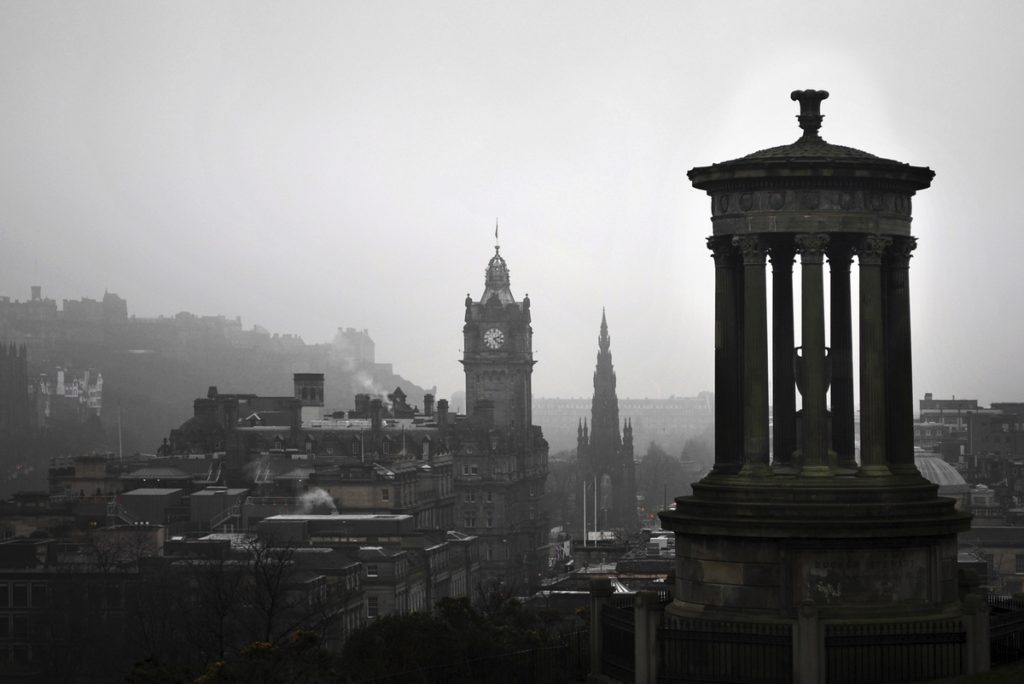Michael Hannah, End of Life Studies Student, Reviews the Anatomy Exhibition at the National Museum of Scotland. The Exhibition runs from 2 July -30 October 2022.

August in Edinburgh is festival time and with so much going on, an exhibition on the history of anatomy may not seem the most appealing way to spend an afternoon. In fact, with the sheer number of events drawing people into the city, most years I try to avoid the crowds altogether … but this year I’m a student on the End of Life Studies Master’s course on Cultural Representations of Death and Dying, and exhibitions like these catch my eye in a way they would not have done previously. So, I braved the crowded streets not once but twice – and even bought the book!
Make no mistake, this is a fascinating exhibition, full of interest for critical end of life thinkers like myself. At the entrance we see a magnificent anatomical model. Strongly reminiscent of the plastinated figures of the Bodyworlds exhibitions, this striking figure was in fact made from papier-mâché in 1879 at the Auzoux workshops in France. And so here we already have a key theme of the exhibition: the often startling beauty of objects that were created for the purpose of teaching anatomy. And in the introductory panel, a reference to the West Port murders in Edinburgh in the 1820s, which introduces us to a second, darker, theme: how did anatomists obtain bodies for their teaching and research?
But it is beauty that we first encounter in the exhibition, several exquisite drawings by Leonardo da Vinci: veins and muscles, the structure of the heart, a dissection of the bowel. These works reveal not only the artist’s talent, but also his extraordinary knowledge of the workings of the human body, knowledge gained from his own dissections. Da Vinci himself cautions that “it is better to see a dissection than to see these drawings”, and as the centuries unfold, dissection becomes a public spectacle.
Padua and Leiden Universities were two early centres of medical education and both built anatomy “theatres” – the very word underlining the public and performative nature of anatomy at the time. In one contemporary drawing of the Leiden theatre, fashionable men and women stroll and pose in the company of skeletons carrying their “momento mori” banners: pulvis et umbra sumus (we are but dust and shadows).

Many Scots studied in Leiden and Padua and in the 18th Century, Edinburgh itself became a centre of medical teaching. Alexander Munro was appointed Professor of Anatomy in 1720 aged just 22, and founded a dynasty of “star” anatomy teachers. So where did these anatomists obtain bodies for dissection? The bodies of executed criminals were available, indeed many had been sentenced to “hanging and dissection”. But there is a ruthless law of supply and demand, and the success of medical education in Edinburgh led to increasing demand for corpses. Consequently we see the “darker side” at work, with grave robbing increasingly frequent. On display is a grim mortsafe – a cast iron outer coffin in which relatives, fearful of the theft of their loved ones, could secure the actual coffin.
Perhaps then the next step was inevitable. A series of infamous murders carried out by William Burke and William Hare in the West Port district of Edinburgh suggests that the rewards of meeting the anatomists’ demands for bodies had become just too tempting. As Walter Scott observed: “a wretch who is not worth a farthing while alive becomes a valuable article when knocked on the head and carried to an anatomist”.
The exhibition devotes a lot of space to Burke and Hare. Perhaps too much for this reviewer, but their story does fit well with prevailing narratives of Edinburgh – New and Old Towns, Enlightenment and medieval superstition. A brief survey of press reviews of the exhibition reveals our continuing fascination with the dark side of this beautiful city. The Guardian’s review begins with Burke’s skeleton…and ends with Jekyll and Hyde.
The Guardian may have ended its review in the 19th Century, but the exhibition itself presses on with its narrative. The West Port murders and the public outcry they provoked led to the passing of the Anatomy Act in 1832. This made it lawful to use for the purposes of dissection “bodies unclaimed” from workhouse, prisons, asylums and hospitals. The shortage of bodies was remedied but it was argued that this changed dissection “from a punishment for murder to a punishment for being poor” (Phillipson, 2022, p. 93).
Significantly though, the Act offered new opportunities for body donation. Initially, take-up was limited but it is now the principal source of bodies for teaching and research. This achievement is celebrated in the final major exhibit, a video triptych of individuals sharing their perspectives on contemporary body donation: the professor of anatomy at Edinburgh University, the wife of a donor, and a medical student. My father donated his body to medical science and I found this installation very moving and a fitting culmination of the story being told here.
That central story is compelling, but there is much more in this exhibition to engage the critical eye, and especially perhaps the feminist eye: all sorts of intriguing, troubling and thought- provoking objects. So now that the festival is over, and the crowds have abated, if you have the chance to visit Edinburgh before 30th October, try to find time to visit the National Museum and this complex and rewarding exhibition.
References
Phillipson, T., 2022. Anatomy : A matter of death and life. Edinburgh: NMS Enterprises


[…] I could write a lot more here about this thought-provoking exhibition but fortunately I was invited by my lecturers at the Glasgow University End of Life Studies Group to contribute to their blog. And so you can read my review here. […]